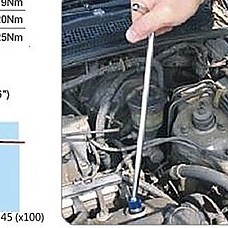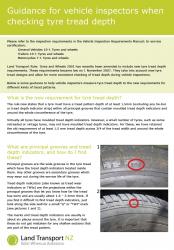Search the Community
Showing results for tags 'depth'.
-
Hi bros, do i need to worry about my tread depth falling below minimum tread depth (1.6mm)? or do you guys just do it when servicing your car.
-
In depth review of Honda Elysion: The King of MPV Recently crowned as the King of MPV by a Japanese motoring magazine that gets the highest marks on owner
-
- 6 replies
-
- Photography
- Tips
-
(and 2 more)
Tagged with:
-
now rainy season, best to change to new tyres if tread depth is shallow.
-
-
Power Boosting Technology -------------------------------------------------------------------------------- Variable Valve Timing (VVT) Basic Theory After multi-valve technology became standard in engine design, Variable Valve Timing becomes the next step to enhance engine output, no matter power or torque. As you know, valves activate the breathing of engine. The timing of breathing, that is, the timing of air intake and exhaust, is controlled by the shape and phase angle of cams. To optimise the breathing, engine requires different valve timing at different speed. When the rev increases, the duration of intake and exhaust stroke decreases so that fresh air becomes not fast enough to enter the combustion chamber, while the exhaust becomes not fast enough to leave the combustion chamber. Therefore, the best solution is to open the inlet valves earlier and close the exhaust valves later. In other words, the Overlapping between intake period and exhaust period should be increased as rev increases. Without Variable Valve Timing technology, engineers used to choose the best compromise timing. For example, a van may adopt less overlapping for the benefits of low speed output. A racing engine may adopt considerable overlapping for high speed power. An ordinary sedan may adopt valve timing optimise for mid-rev so that both the low speed drivability and high speed output will not be sacrificed too much. No matter which one, the result is just optimised for a particular speed. With Variable Valve Timing, power and torque can be optimised across a wide rpm band. The most noticeable results are: - The engine can rev higher, thus raises peak power. For example, Nissan's 2-litre Neo VVL engine output 25% more peak power than its non-VVT version. - Low-speed torque increases, thus improves drivability. For example, Fiat Barchetta's 1.8 VVT engine provides 90% peak torque between 2,000 and 6,000 rpm. Moreover, all these benefits come without any drawback. Variable Lift In some designs, valve lift can also be varied according to engine speed. At high speed, higher lift quickens air intake and exhaust, thus further optimise the breathing. Of course, at lower speed such lift will generate counter effects like deteriorating the mixing process of fuel and air, thus decrease output or even leads to misfire. Therefore the lift should be variable according to engine speed. -------------------------------------------------------------------------------- Copyright
-
Found this..... http://www.worldcarfans.com/print.cfm/ID/2...29.006/lang/eng Haiz...if only the 2.0 i-VTEC Type R come with 6-Speed-i-SHIFT, it l=will then be a complete package exactly what I dream of.... Anyway hope you all enjoy the review.
-
Presenting the BMW M Coupe. - 3.2litre straight-six M engine also featured in the BMW M3 and the BMW Z4 Roadster - 343 hp maximum output at 7,900 rpm - Maximum torque of 365Nm from just 2,000 rpm - Top speed is limited electronically to 250 km/h - Acceleration to 100 km/h comes in 5.0 seconds I like the blue soooo very much.
-
I read that it helps improve the engine power and controls the mixture for combustion Does this chip really improves the car to the extent one can feel?








